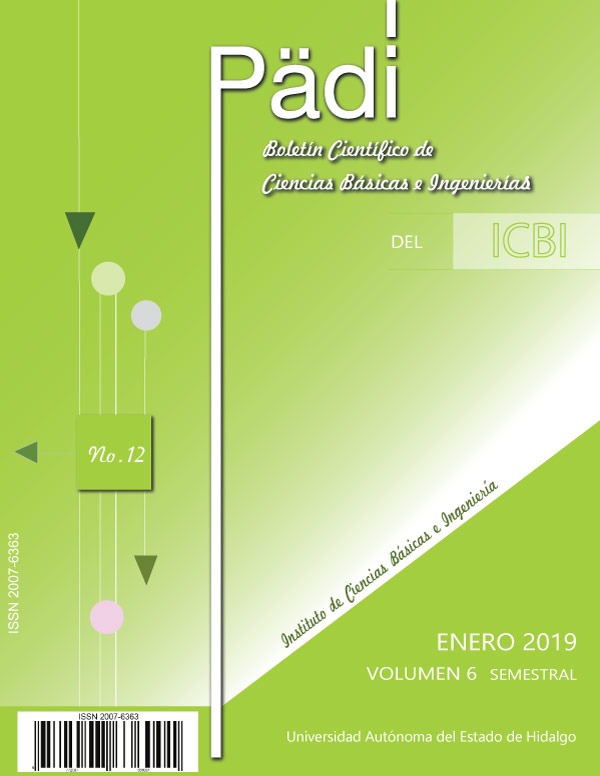The conformation of the new public space in the metropolitan area of Poza Rica
Abstract
The large city generates commitments in the satisfaction of equipment and infrastructure and in terms of public and private spaces. The Metropolitan Area of Poza Rica (ZMPR) in its central municipality, the urban park, as equipment for the healthy development of modern city dwellers, is revealed as a scaffolding for the revitalization of community life avid in its attention to this type of space considerably scarce and with poor accessibility over time. Modern cities with intervened public spaces are positioned as interconnection nodes between the central points of the same, reconciling with them the integration to the urban framework necessary for the vivification and consolidation giving character and identity to each area. The checkerboard of the city has gray areas in the neighborhoods, school areas and roads identified with potential use for these urban spaces with strong citizen participation to perform actions that interfere with children, adolescents and seniors to raise awareness of accessibility principles universal and sustainable design for safe public spaces. The urban park as a space of social expression houses the daily collectivity, the collective memory transforming itself from being considered only as the landscape space par excellence giving way to coexistence and modal transit. It is precisely the residual spaces where the consideration of sustainable design of the new public space is a priority.
Downloads
References
Arredondo, I. A. (2017). Elespacio público de los puente peatonales: lecciones del BRT de Bogotá. Revista Urbano(36), 104-114. Recuperado el 3 de Febrero de 2018
Asociación Nacional de Parques y Recreación y WRI México. (2018). AGENDA 2025 para elespacio público y lavida pública en México: un llamado colectivo a la acción (Primera ed.). Mérida, Yucatán, México: ANPR. Recuperado el 28 de mayo de 2018, de http://wrimexico.org/sites/default/files/AGENDA2025%20EPVP%20MEXICO_VF.pdf
Cantú, R. (2015). La sostenibilidad del centro histórico. México, México: Plaza y Valdés. Recuperado el 30 de enero de 2018
Carrasco, R. (2014). Territorio apropiado en la insustentabilidad. Contribuciones críticas. (1ra. ed.). (PyV, Ed.) México, México: Plaza y Valdéz. Recuperado el 21 de Enero de 2018
Colacios, R. y.-A. (2017). Uso e interacción social en el espacio público: el caso del polígono de vivienda Sant Cosme, Barcelona. (36), 66-77. doi:https://doi.org/10.22320/07183607.2017.20.36.06
INEGI. (2007). Instituto Nacional de Estadística y Geografía. (inegi, Ed.) Recuperado el 17 de mayo de 2018, de http://www.beta.inegi.org.mx/app/buscador/default.html?q=areas+recreativas
Michel, B. G. (2005). La historia de la ciudad...es la de sus espacios públicos (Vol. XXVI). Cuba, Cuba: Redalyc. Recuperado el 27 de mayo de 2018, de
http://revistascientificas.cujae.edu.cu/Revistas/Arquitectura/Vol-XXVI/1-2005/07-15- Lahistoriadelaciudad....pdf
OMS. (2010). Urban planning, environment and Health: from evidence to policy action. Organización Mundial de la Salud. Obtenido de
http://www.euro.who.int/data/assets/pdf_file/0004/114448/E93987.pdf?ua=1
Perahia, R. (2007). La ciudad y su espacio público. Porto Alegre: Universidade Federal do Rio Grande do Sul. Recuperado el 27 de mayo de 2018, de
http://www.ub.edu/geocrit/9porto/perahia.htm
SEDESOL. (2004). Delimitación de las zonas metropolitanas de México. México, México: SEDESOL. Recuperado el 15 de mayo de 2018, de http://www.conapo.gob.mx/work/models/CONAPO/zonas_metropolitanas2000/01.pdf
Talen, E. (2000). Measuring the public ealm: A preliminary assessment of the link between public space and sense of communnity (Vol. 17). Journal of Architectural and Planning Research.














